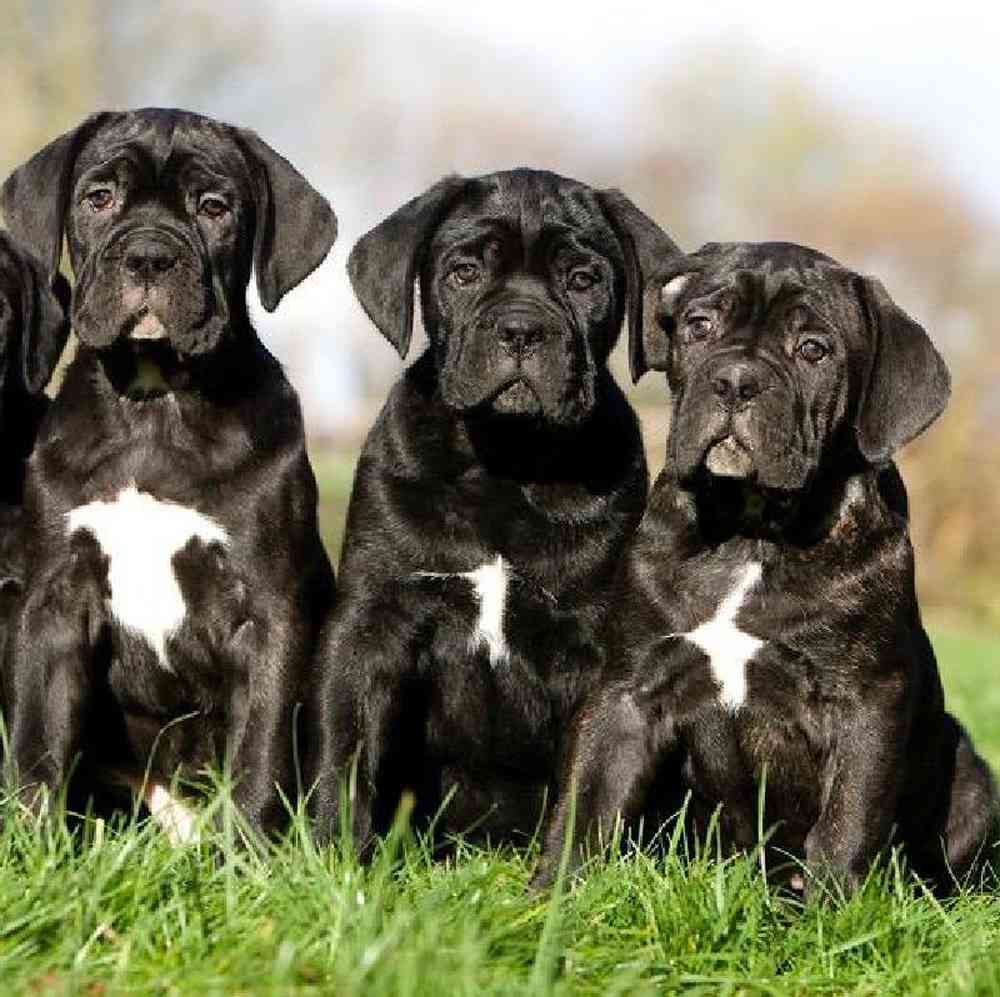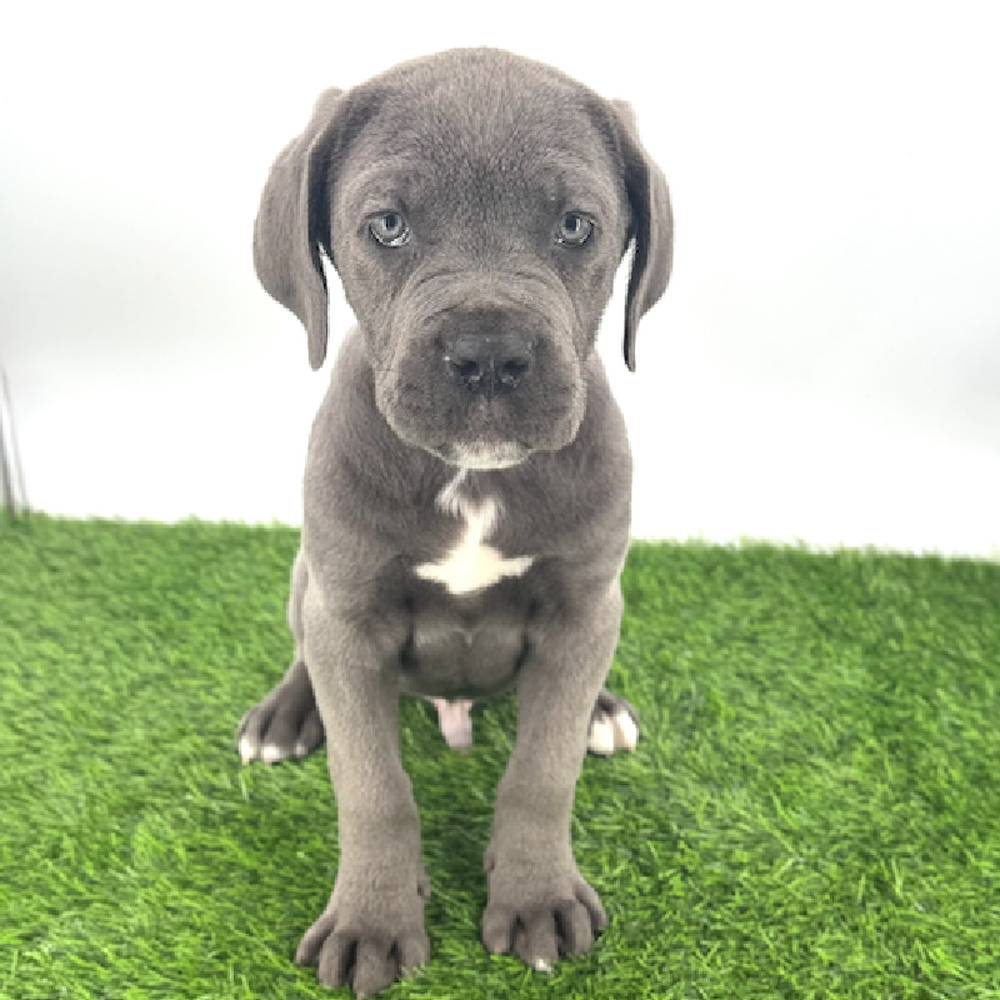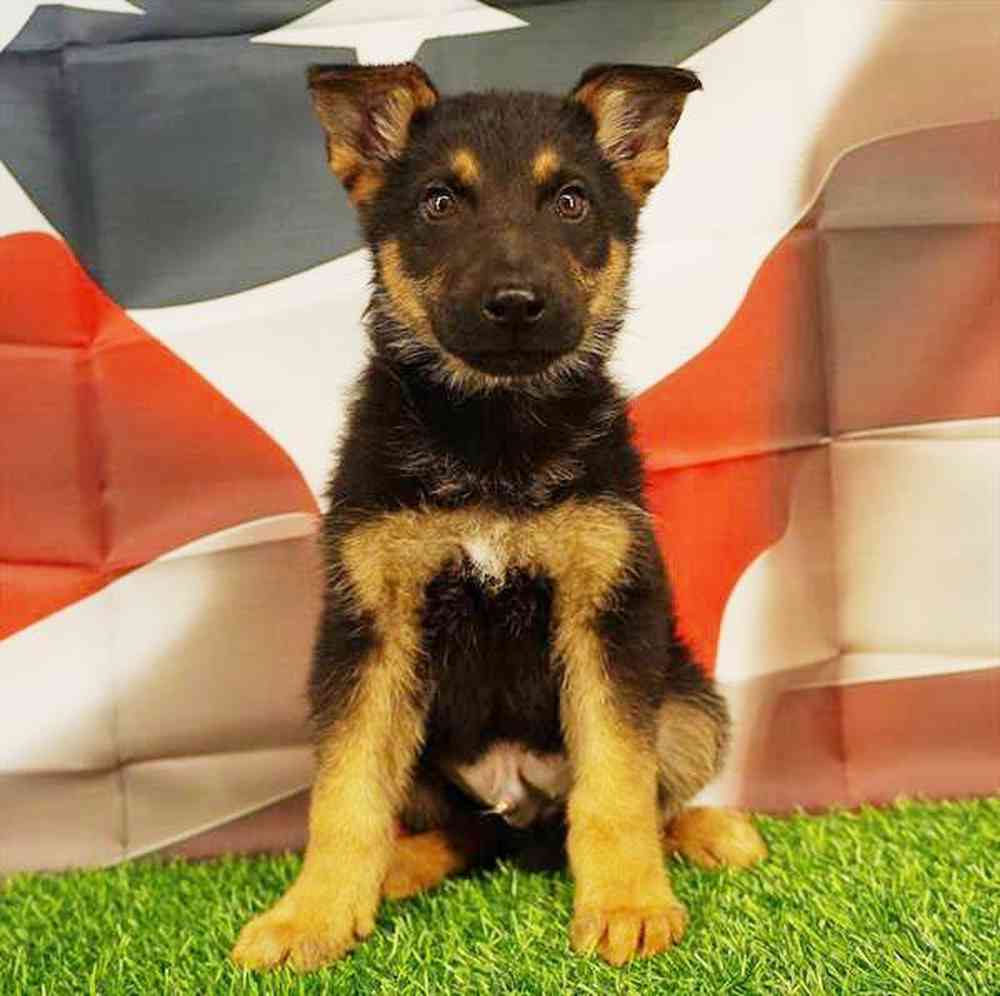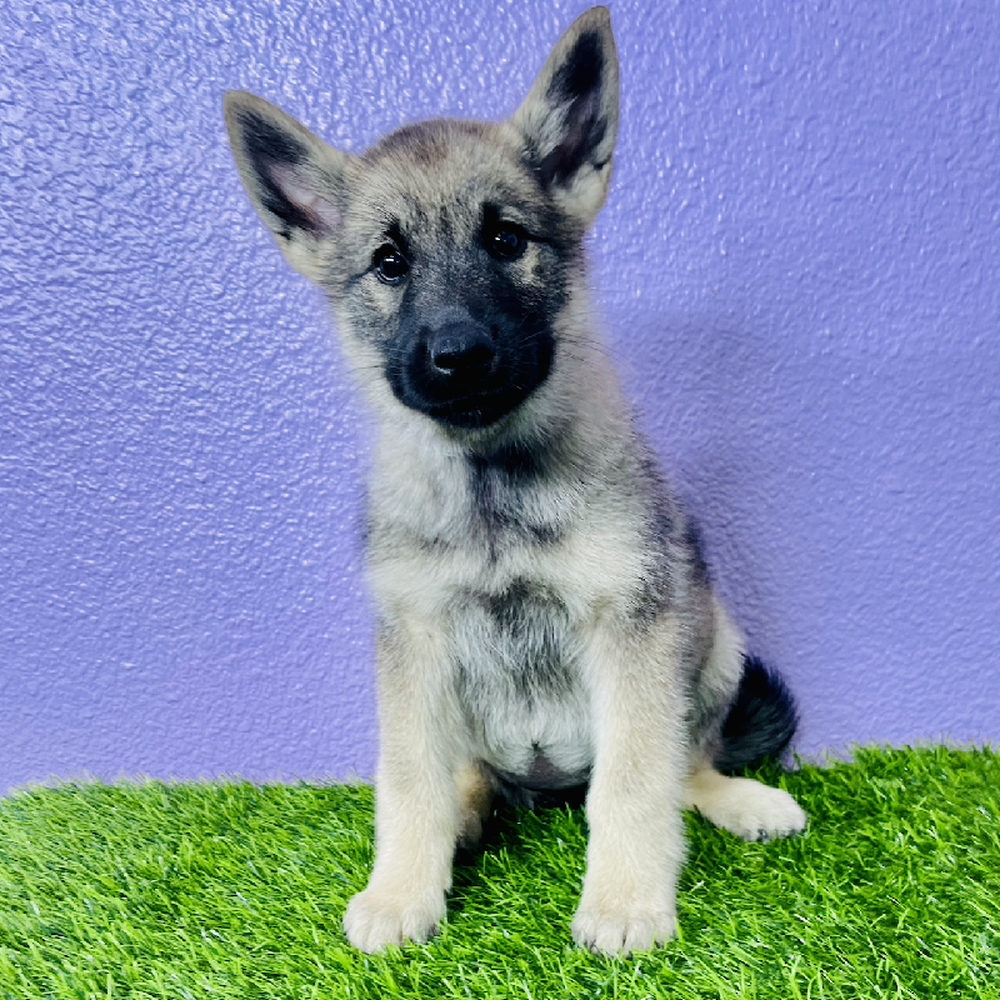
AKC Registrable
Guard Dog
Cane Corso
Smart, trainable, and of noble bearing, the assertive and confident Cane Corso is a peerless protector. The Corso’s lineage goes back to ancient Roman times, and the breed’s name roughly translates from the Latin as “bodyguard dog.”
Available Pups
Puppy Knowledge
Breed Standard
General Appearance
Ancient Italian breed medium-large size Molossus Dog. Sturdy, with a strong skeleton. Muscular and athletic, it moves with considerable ease and elegance. It has always been a property watchdog and hunter of difficult game such as the wild boar.
Head
Molossus, large, its total length reaches approximately one third of the height at the withers. Planes of the skull and muzzle are slightly convergent; they are not parallel. The circumference of the head measured at the cheekbones is more than twice the total length of the head; skin is firm and smooth. Skull - Viewed from the front, skull is wide and slightly curved; width is equal to the length. From the side, a prominent arch begins above the eyes and then flattens backward toward the occiput. Viewed from the top, it has a square appearance due to the zygomatic arches and powerful muscles swathing it. Stop - Well-defined due to developed and bulging frontal sinuses and prominent arch above the eyes. Expression - Very alert and attentive. Some wrinkling on forehead occurs when alert. Eyes - Medium-size, almond-shaped, not round or bulging, tight fitting rims preferred with only a minimal amount of haw being visible. Eye color-Dogs with black muzzles (coat colors of black, fawn or red, and these colors brindled) dark brown eyes are preferred. Gray muzzles (coat colors of gray, fawn or red and these colors brindled), lighter shades are approved. Pigmentation of the eye rims is complete, pigmentation of eye rim matches pigment color of dog. Disqualification - Yellow bird of prey; blue eyes. Ears - Set well above the cheekbones. May be cropped or uncropped. If cropped, it is in an equilateral triangle. If uncropped, they are medium size, triangular in shape, held tight to the cheeks, and not extending beyond the jaw bone. Nose - Large with well-opened nostrils, pigment color to match pigment color of the dog. Dogs with black pigment have black noses; gray pigmented dogs have gray noses; pigmentation is complete. The nose is an extension of the topline of the muzzle and does not protrude beyond nor recede behind the front plane of the muzzle. Muzzle - Very broad and deep, width is almost equal to its length, which reaches approximately one third of the total length of the head; the depth of muzzle is more than 50 percent of the length of the muzzle. The top and bottom muzzle planes are parallel, and the nose and chin form a perpendicular line. Viewed from the front, the anterior face should look flat and form a trapezoid, wider at the bottom. Muzzle is not overly narrow or snipey. Lips - Rather firm. Upper lips moderately hanging, they join under the nostrils to form an inverted "U." Pigmentation matches color pigment of dog. Dogs with black pigment have black lips; gray pigmented dogs have gray lips. Bite - Slightly undershot (no more than ¼ inch) and level preferred. Scissor bite is acceptable, if parameters of the head and muzzle are correct. Dentition is complete. Incisors are in a straight line. No more than two missing teeth.
Neck, Topline, Body
Neck-Slightly arched, flowing smoothly into the shoulders with a small amount of dewlap. The length of the neck is approximately one third the height at the withers. Body - Depth of the ribcage is equal to half the total height of the dog, descending slightly below the elbow. Ribs are long and well sprung. Moderate tuck up. Chest - Broad, well-muscled, strong forefront. Back - Wide, strong, muscular. Highest part of shoulder blade slightly rising above the strong, level back. Loin - Well-muscled, and harmoniously joined to the back. Croup - Long, wide, slightly sloping. Rump should be quite round due to muscling.
Forequarters
Strong and muscular, well-proportioned to the size of the dog. Straight when viewed from the front or side; height of the limb at the elbow is equal to 50 percent of the height at the withers. Shoulders- Muscular, laid back. Upper arms - Strongly muscled, with good bone, powerful. Elbows - Held parallel to the ribcage, turning neither in nor out. Forelegs - Straight and with good bone, well muscled. Pasterns - Almost straight, strong but flexible. Feet - Round with well-arched toes (catlike). Lean, hard, dark pads and nails, except in the case of white toes. Front dewclaws - Can remain or be removed, if left intact should only be a single dewclaw on each leg.
Hindquarters
As a whole, they are powerful and strong, in harmony with the forequarters. Straight when viewed from the rear or front. Thighs - Long, wide, angulated and well-muscled. Stifle - Should be moderately angulated, strong. Legs - Strong bone and muscle structure. Hocks - Wide set, thick and clean, let down and parallel when viewed from behind. Rear pastern - straight and parallel. Rear dewclaws - Any rear dewclaws are removed. Hind feet - Slightly more oval-shaped and less-arched toes.
Size, Proportion, Substance
A muscular, balanced, large-boned dog, rectangular in proportion. The length of the dog, measured from the point of the shoulder to the point of buttock is approximately 10 percent greater than the height of the dog measured from the highest point of the shoulder to the ground. Height - Dogs 25 to 27½ inches; bitches 23½ to 26 inches. Weight - Proportionate to height.
Tail
Tail set is an extension of the backline. It is thick at the root with not much tapering at the tip. When not in action, carried low, otherwise horizontal or slightly higher than back, not to be carried in a vertical position. It is docked at the fourth vertebrae. In the case of natural tails, the tip reaches the hock but not below. Carried low, it is neither broken nor kinked but supple. Hanging when the dog is in repose; generally carried level with the back or slightly above the level of the back when the dog is in action, without curving over the back or being curled. Disqualification - A natural tail that is atrophied or a natural tail that is knotted and laterally deviated or twisted.
Coat
The coat is short, stiff, shiny, adherent and dense with a light undercoat that becomes thicker in cold weather.
Color
Acceptable colors are black, lighter and darker shades of gray, lighter and darker shades of fawn, and red. Brindling is allowed on all of these colors. Solid fawn and red, including lighter and darker shades, have a black or gray mask. The mask does not go beyond the eyes. There may be a white patch on the chest, throat, chin, backs of the pasterns, and on the toes. Disqualification - Any color with tan pattern markings as seen in black-and-tan breeds.
Gait
The movement is free flowing and powerful, yet effortless, with strong reach and drive. As the dog accelerates, the feet converge toward a center line of gravity in a near-single track. When viewed from the side, the topline remains level, with minimal roll or bounce.
Temperament
Affectionate, Intelligent, Majestic
Overview
Group
Working
About
At nearly 28 inches at the shoulder and often weighing more than 100 pounds, with a large head, alert expression, and muscles rippling beneath their short, stiff coat, Corsi are at a glance intimidating creatures. Their imposing appearance is their first line of defense against intruders. As one writer put it, “An understated air of cool competence, the kind of demeanor you’d expect from a professional bodyguard, is the breed’s trademark.” Corsi are intelligent, loyal, eager to please, versatile, and intensely loyal to their humans, but are also assertive and willful, and can end up owning an unwitting owner. As with any other big guardian dog, responsible breeding and early socialization with people and other dogs is vital.
History
The Cane Corso (KAH-neh-KOR-soh; plural: Cani Corsi) belongs to a subcategory of working breeds called mollosus dogs, or mollosers, named for the Molossi, an ancient Greek tribe thought to have bred giant, big-boned guardian dogs of Mastiff type. At the height of the Roman Empire’s power, the legions that subdued and occupied the Greek islands brought mollosers back to Italy and bred them to native Italian breeds. The offspring produced by these crosses were ancestors of the modern Corso and it’s larger relative, the Neapolitan Mastiff. The original Corsi were used as dogs of conquest who earned their stripes as “pireferi,” fearless dogs who charged enemy lines with buckets of flaming oil strapped to their backs. It is supposed that these early Corsi were bigger, more lumbering dogs than today’s sleeker version, which moves with a catlike grace. With the dissolution of the Western Empire in the fifth century, Italy’s legions and their dogs were out of work. Corsi adapted to such civilian jobs as wild boar hunting, farming, livestock droving, and most famously, guarding farmsteads and henhouses. The Corso was for centuries a familiar sight on the farms and pastures dotting the Italian countryside. But the effects of constant invasions of the Italian peninsula and Sicily, economic and political upheavals, and mechanized farming conspired to reduce the Corso population to precariously low numbers. By the mid-20th century, the breed was all but extinct. Specimens did survive, however, in Italy’s back country. In the 1970s, a group of Italian fanciers banded together to revive the breed of their rustic ancestors. The Society Amorati Cane Corso (Society of Cane Corso Lovers) was formed in 1983, and by the following decade Corsi were being exhibited in European dog shows. The first Corso import arrived in America in 1988, and in 2010 the breed was recognized by the AKC.
Standard
Ancient Italian breed medium-large size Molossus Dog. Sturdy, with a strong skeleton. Muscular and athletic, it moves with considerable ease and elegance. It has always been a property watchdog and hunter of difficult game such as the wild boar.
Nutrition
The Cane Corso should do well on a high-quality dog food, whether commercially manufactured or home-prepared with your veterinarian’s supervision and approval. Any diet should be appropriate to the dog’s age (puppy, adult, or senior). Some dogs are prone to getting overweight, so watch your dog’s calorie consumption and weight level. Treats can be an important aid in training, but giving too many can cause obesity. Learn about which human foods are safe for dogs, and which are not. Check with your vet if you have any concerns about your dog’s weight or diet. Clean, fresh water should be available at all times.
Grooming
The Cane Corso’s coat is short, but double-layered. The undercoat, which varies in length depending on the climate the dog lives in, sheds throughout the year, especially during shedding season in the spring. Weekly brushing—daily during shedding season—with a medium-bristle brush, a rubber grooming mitt or tool, or a hound glove will remove the dead hair before it can fall onto the furniture, and it helps remove dirt and promotes new hair growth as well. As with all breeds, the nails should be trimmed regularly, as overly long nails can be painful to the dog and cause problems walking and running.
Exercise
Cane Corsos need serious exercise. A brisk walk—or better yet, run—of at least a mile in the morning and again in the evening will sustain their health and muscle tone. They make great companions on long walks, hikes, or bicycle rides. The Cane Corso was bred to work and is happiest when given a job to do. He needs mental as well as physical stimulation, or undesirable behavior will result. Many Cane Corsos compete in agility, obedience, dock diving, protection sport, and tracking events.
Training
Early socialization and puppy training classes are recommended for all dogs, but for a breed as big and strong as a Cane Corso, they are a must. Many Cane Corsos can be dominant and protective; socialization will help ensure that they grow into well-adjusted, well-mannered adults. Obedience training will keep them from becoming the boss in the household. Cane Corsos are intelligent and eager to please, so they are generally easy to train. Despite their appearance, Cane Corsos are all heart, and respond to love and rewards far better than to harsh corrections or training methods.
Health
Cane Corsos are generally healthy dogs,and responsible breeders screen their stock for health conditions such as hip dysplasia, idiopathic epilepsy, demodex mange, and eyelid abnormalities.vLarge and deep-chested breeds are susceptible to bloat, a sudden, life-threatening stomach condition. Cane Corso owners should learn what signs to look out for, and what to do should they occur. As with all breeds, a Cane Corso’s ears should be checked regularly for signs of infection, and the teeth should be brushed often, using a toothpaste designed for dogs.





